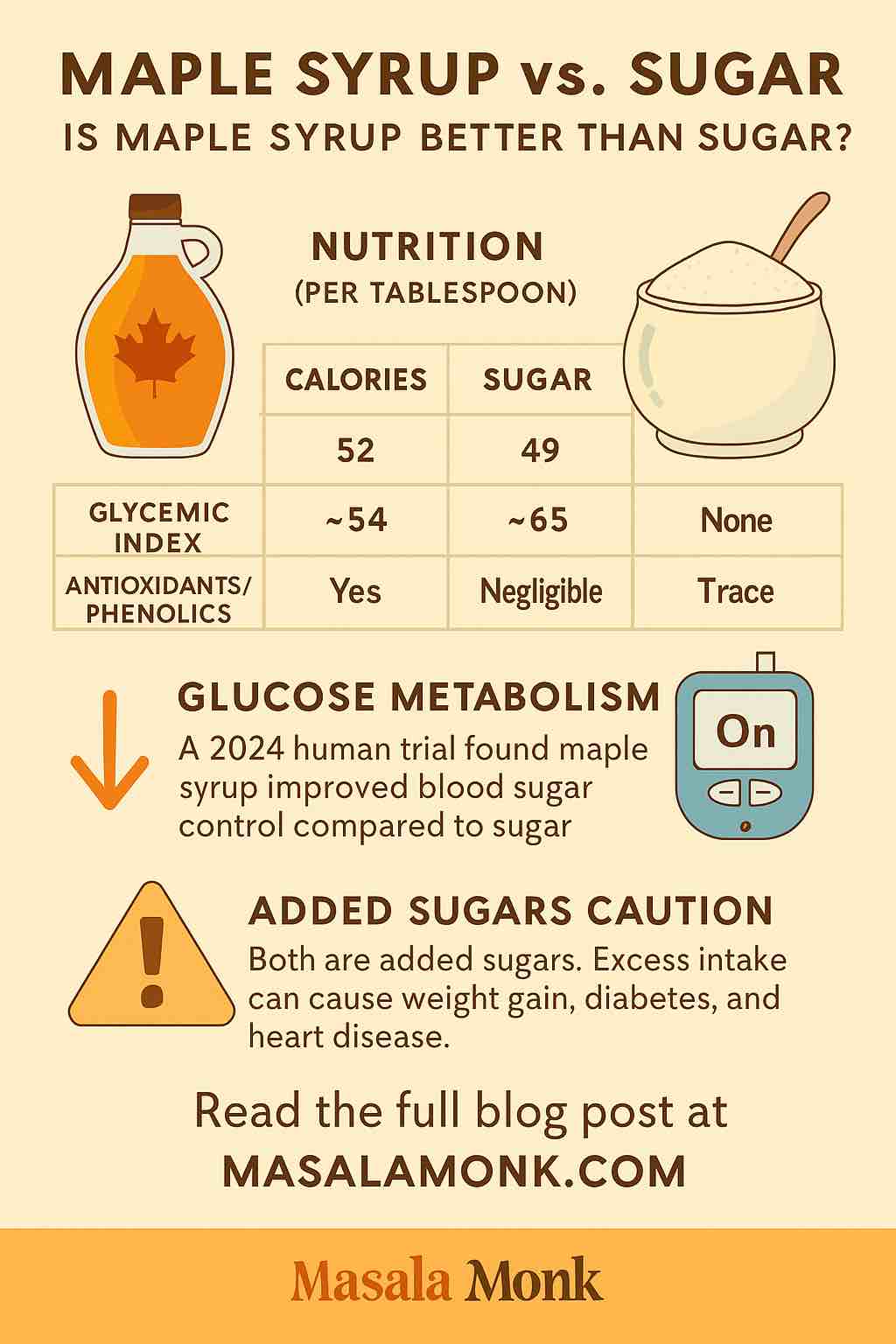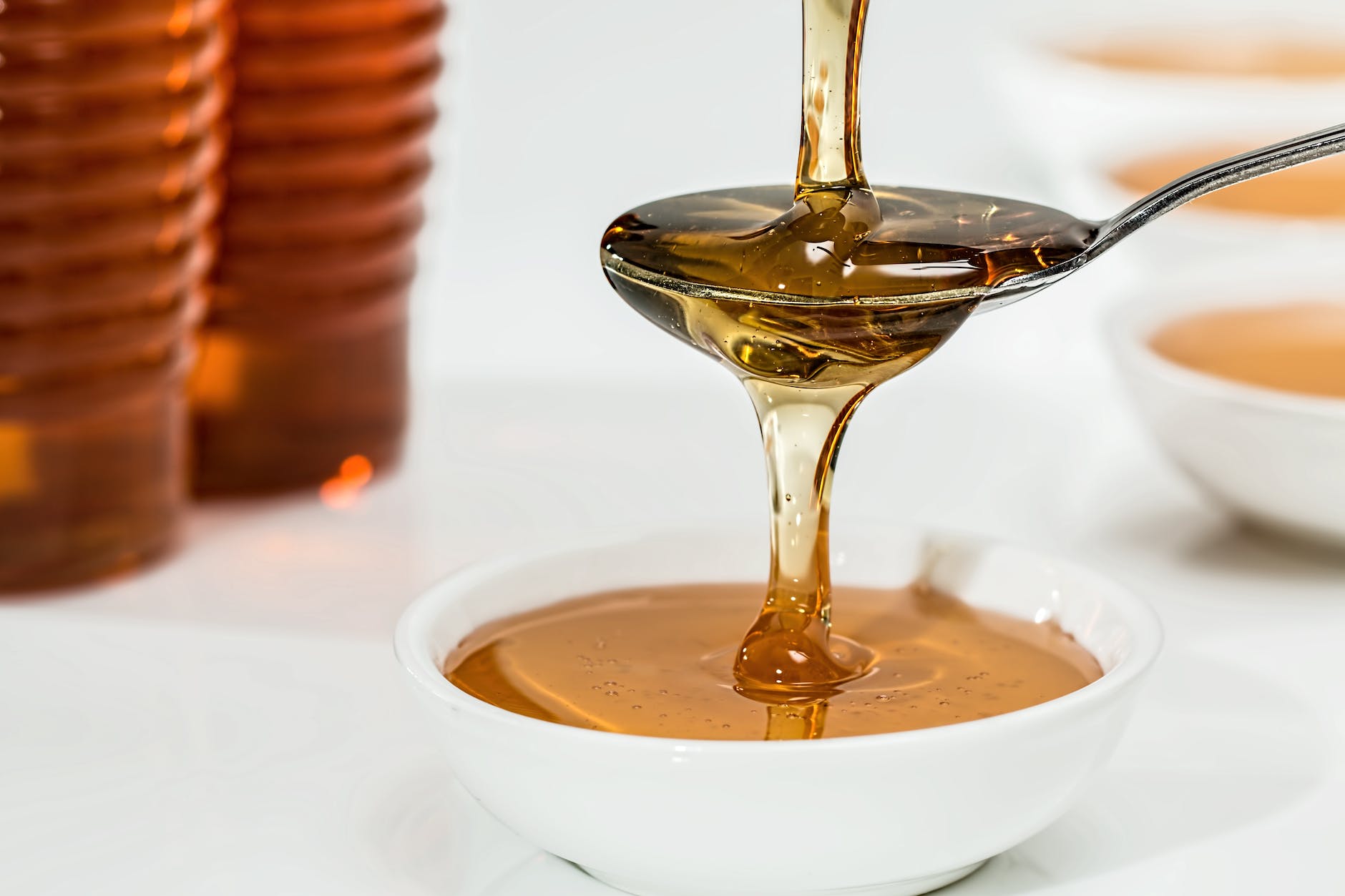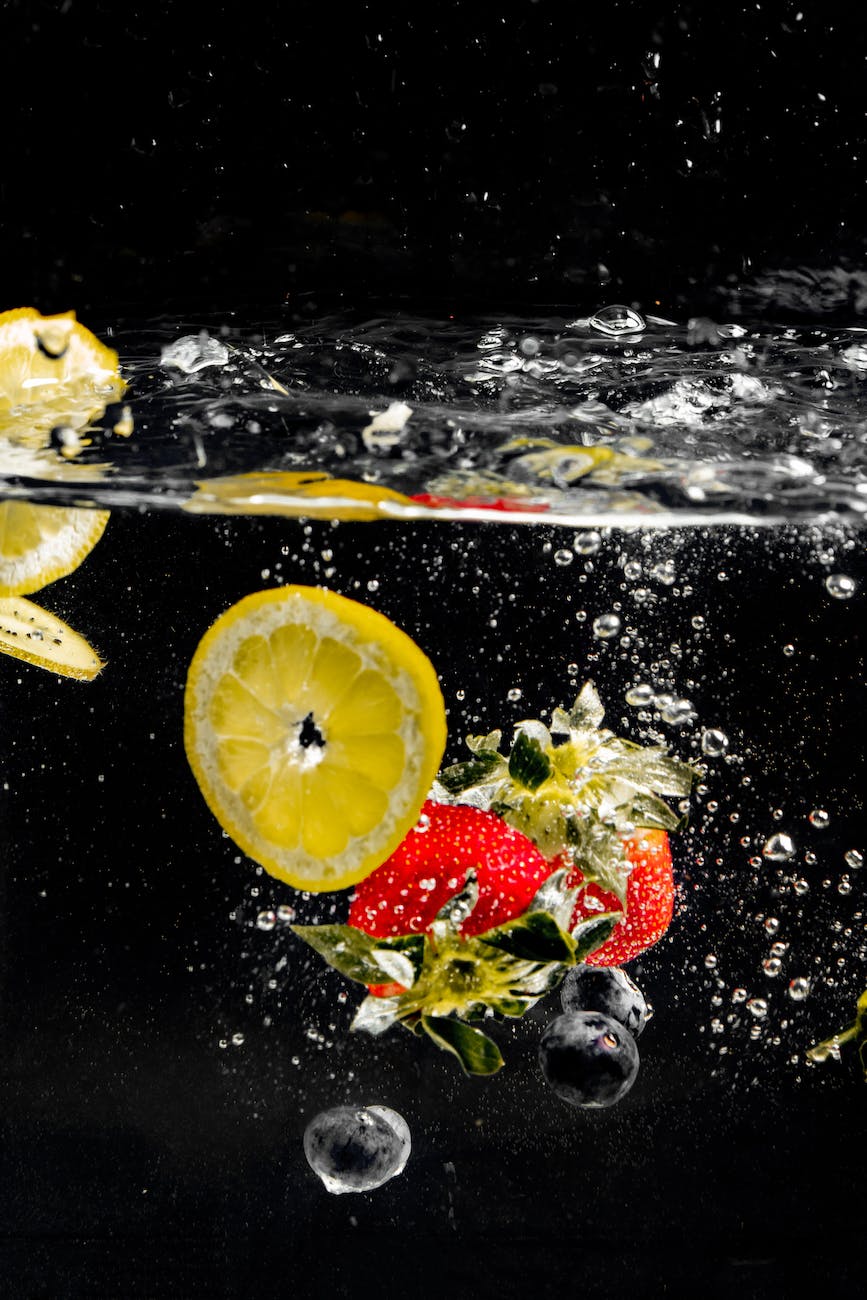
You stand in your kitchen, eyeing that bottle of pure maple syrup beside your familiar white sugar jar. The pancake is hot and ready—so what do you pour? If you’ve wondered whether maple syrup is actually a healthier alternative or just another sugar in disguise, you’re not alone.
Let’s dig deep—beyond marketing, beyond myths—and use the latest science (including a 2024 human clinical trial!) to discover: Is maple syrup better than sugar?
1. The Basics: What Are We Comparing?
White Sugar (Sucrose):
- Made from sugar cane or sugar beets.
- 100% refined sucrose (glucose + fructose).
- Neutral flavor, highly versatile.
- Virtually no nutrients beyond pure carbohydrate.
Maple Syrup:
- Tapped from the sap of sugar maple trees, then boiled down.
- Roughly 60% sucrose + water + traces of glucose/fructose.
- Distinct, robust flavor and aroma.
- Contains minerals, antioxidants, and unique plant compounds.
2. Nutrition Showdown: Calories, Carbs, and More
| Per Tablespoon | Maple Syrup | White Sugar |
|---|---|---|
| Calories | 52 kcal | 49 kcal |
| Carbohydrates | 13g | 12.5g |
| Sucrose Content | ~60% | 100% |
| Glycemic Index (GI) | ~54 | ~65 |
| Nutrients (e.g. Mn, Zn) | Trace amounts | Negligible |
| Antioxidants/Phenolics | Yes | None |
Takeaway:
Both are concentrated sources of sugar and calories. But maple syrup has a slightly lower GI, plus trace nutrients and plant compounds that white sugar lacks.
3. What Does the Latest Research Say?
🍁 The 2024 Human Trial: Maple Syrup Gets Its Day in Court
In late 2024, researchers ran a gold-standard, placebo-controlled trial (n=42 adults) where participants swapped 2 tablespoons of sugar a day for the same amount of maple syrup. After 8 weeks, those using maple syrup (vs sugar) saw:
- Better blood sugar control: Lower blood glucose spikes during a glucose tolerance test.
- Reduced abdominal fat: Small but measurable decreases in belly fat.
- Lower systolic blood pressure: On average, a drop of nearly 3 mm Hg.
- Healthier gut: Maple syrup improved gut bacteria, increasing helpful strains and reducing harmful ones.
Caveat: This is a small, short-term study. More research is needed for big health claims, but the results are promising.
🧬 Lab & Animal Studies
Animal studies confirm maple syrup’s modest benefits for blood sugar, fat metabolism, and inflammation, thanks to its unique antioxidants (like quebecol, formed only during the syrup’s boiling process).
4. Beyond Nutrition: The Flavors and Practical Kitchen Wisdom
Flavor
- Maple syrup: Deep, caramelized, sometimes smoky. Pairs beautifully with pancakes, oatmeal, yogurt, roasted veggies, and more.
- Sugar: Neutral—perfect for recipes where you don’t want added flavor.
Baking & Cooking Tips
- Substitute: Maple syrup is sweeter by volume than sugar, so you can use slightly less. Try replacing 1 cup sugar with ¾ cup maple syrup, and reduce other liquid by 3 tablespoons.
- Watch for moisture: Maple syrup adds liquid. Adjust recipes or cooking time, especially in baked goods.
- Don’t use “pancake syrup”: Most commercial syrups are corn syrup + artificial flavor, not real maple.
5. The Real Health Bottom Line
Maple Syrup’s Advantages:
- Lower glycemic index (raises blood sugar a bit more slowly).
- More than 100 bioactive compounds, including polyphenols with anti-inflammatory and antioxidant effects.
- Trace minerals: manganese, zinc, calcium, potassium.
But… Don’t Overdo It:
- Both are added sugars.
Overconsumption—of any sugar—raises risk for obesity, type 2 diabetes, heart disease, and tooth decay. - No miracle cure: To get significant minerals from maple syrup, you’d need to consume way too much.
- Calories still count: Maple syrup is not “diet food.”
6. Environmental and Ethical Considerations
- Maple syrup production: Often small-scale, supports sustainable forestry, low pesticide use, and keeps forests standing.
- Sugar production: Can involve deforestation, heavy pesticide/fertilizer use, and global shipping.
7. Practical Verdict: Should You Switch?
If you love the taste, real maple syrup is a smarter sweetener choice—in moderation. It’s less processed, has a unique flavor, and delivers trace nutrients and plant compounds that sugar simply doesn’t.
But don’t fall for the “natural equals healthy” myth: you still need to limit all added sugars for long-term health.
Smart Strategies
- Use pure maple syrup for flavor-forward dishes (pancakes, yogurt, roasted nuts).
- Keep both sweeteners as occasional treats, not daily staples.
- Train your palate to appreciate less overall sweetness—your body and taste buds will thank you.
References & Further Reading
- USDA FoodData Central: Maple Syrup
- PubMed: 2024 Human Clinical Trial
- Cleveland Clinic: Is Maple Syrup Healthier Than Sugar?
- Healthline: Maple Syrup
- Ohio State: Monthly Maple Review
- Verywell Health: Maple Syrup vs. Honey
Conclusion
Maple syrup wins on flavor, nutrients, and research-backed modest benefits. But the healthiest move? Sweeten less, no matter what you choose.
What’s your favorite way to use maple syrup? Any baking experiments or recipes you love? Let’s keep the conversation (and the pancakes) going in the comments!
10 FAQs About Maple Syrup vs Sugar
1. Is maple syrup healthier than white sugar?
Answer: Maple syrup has a lower glycemic index, more minerals, and antioxidants than white sugar. However, both are added sugars and should be used in moderation.
2. Can people with diabetes use maple syrup instead of sugar?
Answer: Maple syrup has a slightly lower impact on blood sugar but still raises glucose. People with diabetes should treat both as added sugars and limit their use.
3. How much maple syrup is safe to consume daily?
Answer: Nutritionists recommend limiting all added sugars to less than 6 teaspoons (25g) per day for women and 9 teaspoons (36g) for men—including maple syrup.
4. Does maple syrup contain nutrients that sugar doesn’t?
Answer: Yes. Maple syrup has trace amounts of manganese, zinc, calcium, potassium, and antioxidants. Sugar has virtually none.
5. Is “pancake syrup” the same as real maple syrup?
Answer: No. Pancake syrup is usually corn syrup with artificial flavor. Always check labels and choose “100% pure maple syrup” for health and flavor benefits.
6. Can I use maple syrup in baking instead of sugar?
Answer: Yes, but you’ll need to reduce the recipe’s other liquids by about 3 tablespoons for each cup of maple syrup used, since maple syrup adds moisture.
7. Does maple syrup help with weight loss?
Answer: No. Maple syrup is calorie-dense and, like sugar, can contribute to weight gain if overused. Use it as an occasional treat, not a weight-loss aid.
8. Is maple syrup environmentally friendly?
Answer: Generally yes. Maple syrup production is sustainable, supports forest preservation, and uses fewer pesticides compared to large-scale sugar cane or beet farming.
9. What are the unique compounds in maple syrup?
Answer: Maple syrup contains over 100 bioactive compounds, including antioxidants and a unique molecule called quebecol, formed during boiling.
10. Does maple syrup spoil? How should I store it?
Answer: Unopened maple syrup can last for years. Once opened, refrigerate it to prevent mold and use within 6–12 months.













